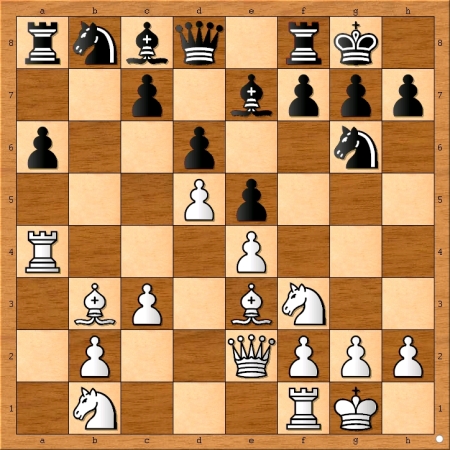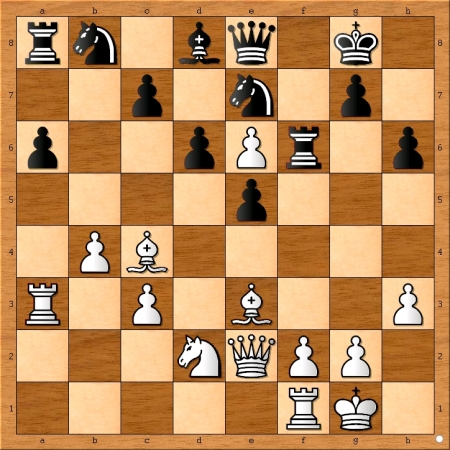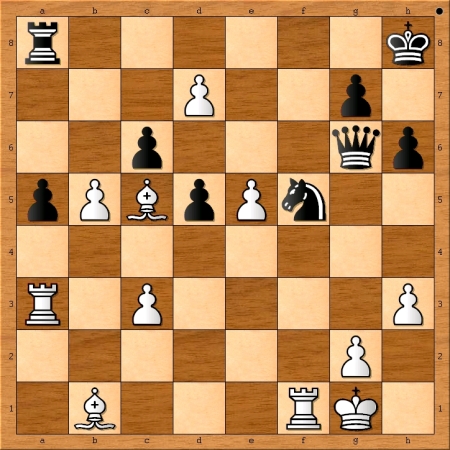
Relaxed and highly personable, Schiller bantered amiably with the audience while presenting three of his games against Emory Tate.
There’s an ancient Hebrew proverb that goes something like, “The Rivalry of scholars advances wisdom.” And such was the case of the rivalry between Eric Schiller and Emory Tate. So it was a very special occasion at the Fremont Summer Chess Camp when when Eric Schiller did a two-hour lesson on his three games against Emory Tate while Tate was in the room to interject his opinions. To this day, I still receive “thank you’s” from the young chess players in the room who greatly benefited from the wisdom of these two masters.

Emory Tate inspiring the next generation at the Fremont Summer Chess Camp.
Below is part 2 of the trilogy of chess battles between Eric Schiller (March 20, 1955 – November 3, 2018) and Emory Tate (December 27, 1958 – October 17, 2015) with notes by Schiller.
[Event "Western States Open"]
[Site "Reno, Nevada (USA)"]
[Date "2004.10.16"]
[Result "1-0"]
[White "Emory Tate"]
[Black "Eric Schiller"]
1.e4 {Notes by Eric Schiller.}
1... e5
2.Nf3 Nc6
3.Bb5 Nge7
4.O-O a6
5.Ba4 b5
6.Bb3 Ng6
7.c3 Be7
8.d4 O-O
9.a4 {A new move in this rarely explored opening. It caught me off-guard and I did
not react properly.} Bb7 {?! 9...b4 was surely the correct
plan. 9...Rb8 looks dubious because of 10.axb5 axb5 11.d5 +- }

Position after 9. a4
10.d5 Nb8 { This retreat is not justified. I simply was afraid
of the plan of maneuvering my knight to c4, because I feared
that after a capture by the bishop, and recapture with my
d-pawn, that the pawn at c4 would then be a serious
weakness. 10...Na5 11.Ba2 c5 12.b4 Nc4 13.Bxc4 bxc4 14.bxc5
Bxc5 15.Na3 +0.27 would not be so bad for Black. }

Position after 10… Nb8
11.Qe2 bxa4 { I was thinking along the lines of my game with Nicholas
Yap. that's what happens when you win a nice game, it carries
over and the next time you use the opening you tend to play
the same way, whether or not it is appropriate.}

Position after 11… Bxa4
12.Rxa4 d6
13.Be3 {+/= No doubt about it, White has a small advantage
here. Nevertheless, Black can whip up some serious counter
play.}

Position after 13. Be3
13... Bc8 {?! This bishop is destined to stagger drunkenly
all over the board, without having any serious effect on
White's position. 13...Nd7 would've been a much better plan
and in that case White's advantage would not have been so
significant. }

Position after 13… Bc8
14.Nbd2 Bd7
15.Ra3 f5 {At this point there
really isn't any other source of counterplay.}

Position after 15… f5
16.exf5 Bxf5
17.Bc4 Bg4
18.h3 Bc8
19.Ne4 h6
20.b4 {! +/- White has a dominating position and Black is suffering under the weight of
a large number weaknesses.}

Position after 20. b4
20... Qe8
21.Nc5 {! A powerful move! The sacrifice cannot be accepted.}

Position after 21. Nc5
21... Bd8 { 21...dxc5 ? 22.d6+ Kh8 23.dxe7 Nxe7 24.Bxc5 is a miserable
for Black. }

Position after 21… Bd8
22.Ne6 Rf6
23.Nd2 Bxe6 {!? Of course that this is not the best move,
objectively. I made the capture simply because it allowed me
to develop a plan to win White's new weakling at e6, and
possibly get some counter play going by advancing central
pawns. Other moves would have left me with a miserable
position with no real chances to establish any sort of counter
play.}

Position after 23… Bxe6
24.dxe6 Ne7 { All I have to do is somehow advance my
pawn from d6 to d5 and everything will be fine. Unfortunately
my opponent doesn't allow me to do that..}

Position after 24… Ne7
25.Ne4 {!} Rf8
26.Ba2 {By the way, did I underestimate this move. At the very
end of the game you will see the point.}

Position after 26. Ba2
26... Qg6
27.Bc1 Kh8
28.b5 a5
29.f4 {!} d5 { Finally! At this point, however, the move
doesn't have much of an impact and allows the knight to take
up an even better post at c5.}

Position after 29… d5
30.Nc5 c6
31.Qxe5 Bb6
32.Be3 Nf5 {? Right square, wrong piece. I could have kept the game
close by moving my rook to the square. 32...Rf5 ! 33.Qd4 Bxc5
34.Qxc5 Qxe6 35.bxc6 Nbxc6 +/= }

Position after 32… Nf5
33.Bf2 {? A serious error which allows me to get back into the game,
but both of us mis-analyzed the position and missed the finesse at the
end. 33.Bd4 ! Nxd4 34.cxd4 cxb5 35.Bxd5 Bxc5 36.dxc5 Ra7 37.f5
was the correct plan. White's passed pawns and dominating
bishop provide a winning advantage. }

Position after 33. Bf2
33... Re8 {? 33...Nh4 ! was the saving plan. I spotted the move, of course,
but simply didn't date indeed enough into the position. Both players
saw the same continuation [34.Bxd5 ! cxd5 35.Qxd5 Ra7 ! 36.Bxh4 (but here
we both failed to spot Rf5 !) 37.Qe4 Bxc5+ 38.Bf2 Qf6
[38...Bxa3 39.Bxa7 ] 39.Bxc5 Rxc5 40.Rxa5 Rxa5 41.e7 Rc8
42.e8=Q+ Rxe8 43.Qxe8+ Kh7 44.Qxb8 Qxc3 with a difficult but
not hopeless position for Black. }

Position after 33… Re8
34.Bb1 {! +- The bishop slips onto the long diagonal and finishes
off the game.}

Position after 34. Bb1
34... Bxc5
35.Bxc5 Nd7 {I allow Emory Tate to finish the game with a
flashy tactic. Why not? He played very well.}

Position after 35… Nd7
36.exd7 Rxe5
37.fxe5 {I resigned. My opponent at long last got his revenge
for my upset victory in the 1997 United States Masters.} 1-0

Position after 37. fxe5
Eric Schiller VS Emory Tate Game 1












































